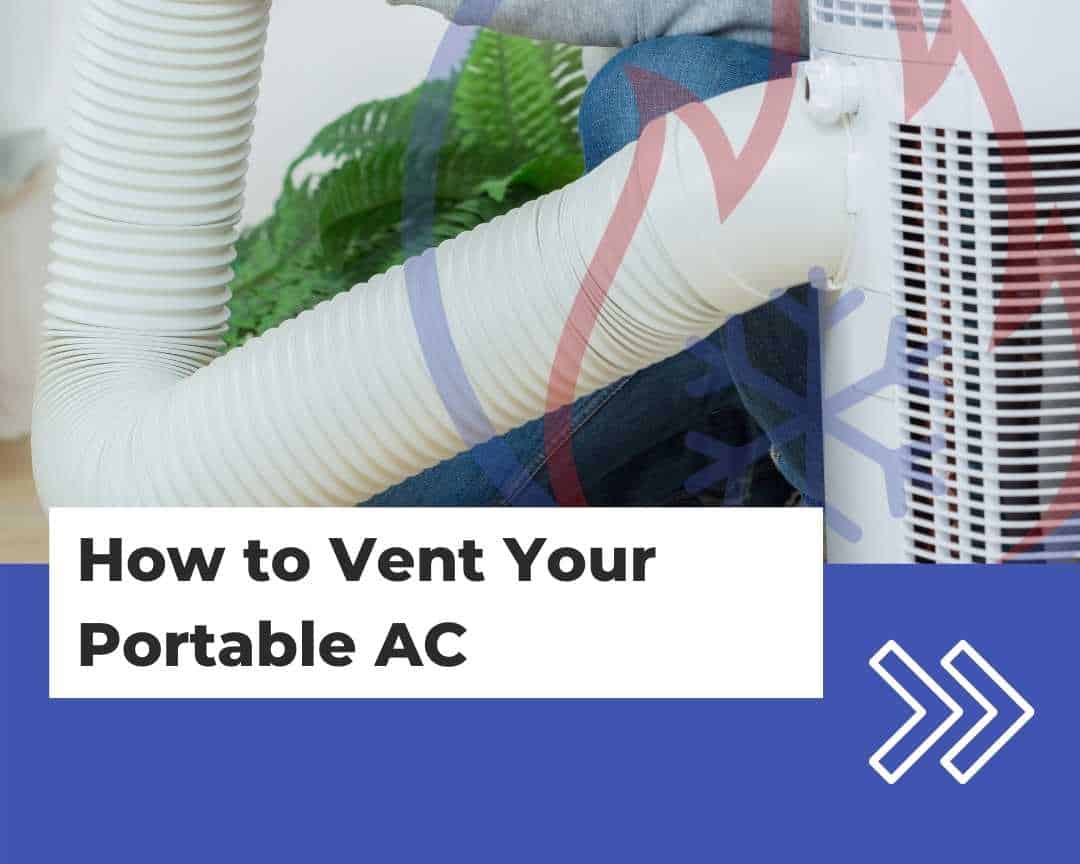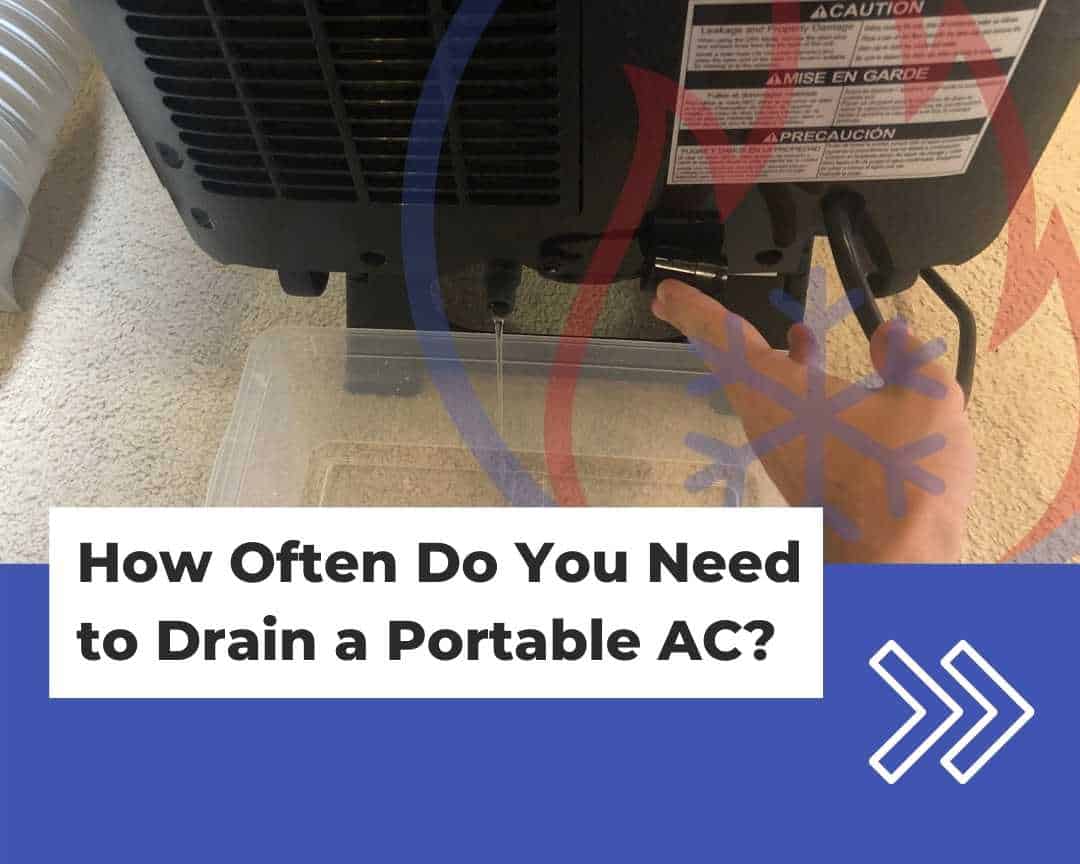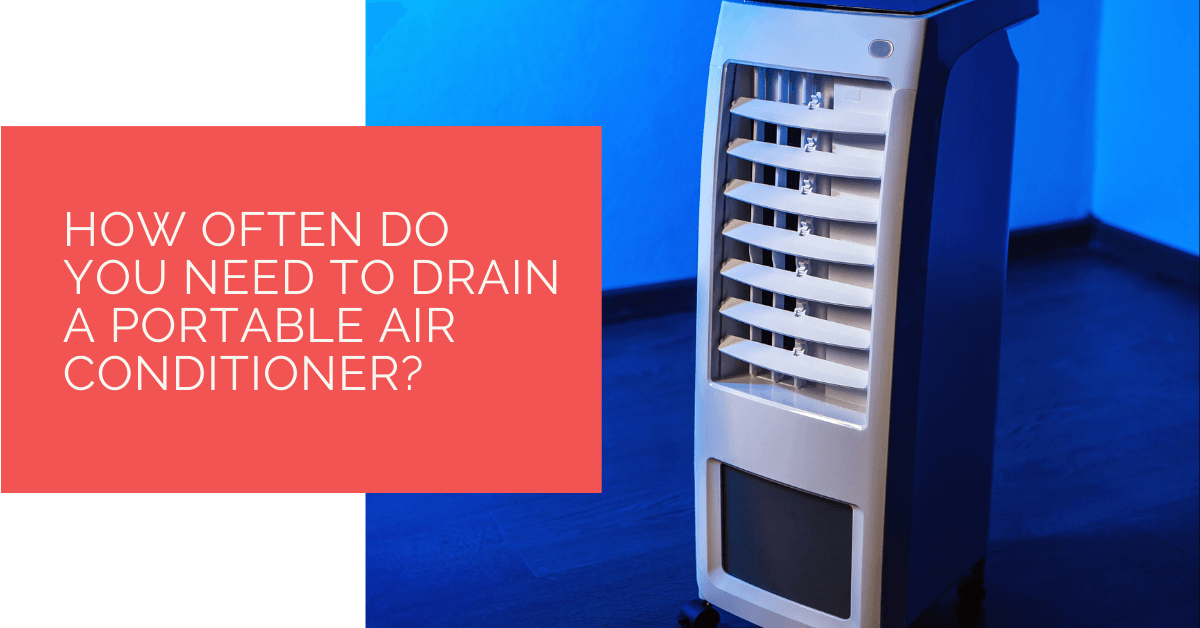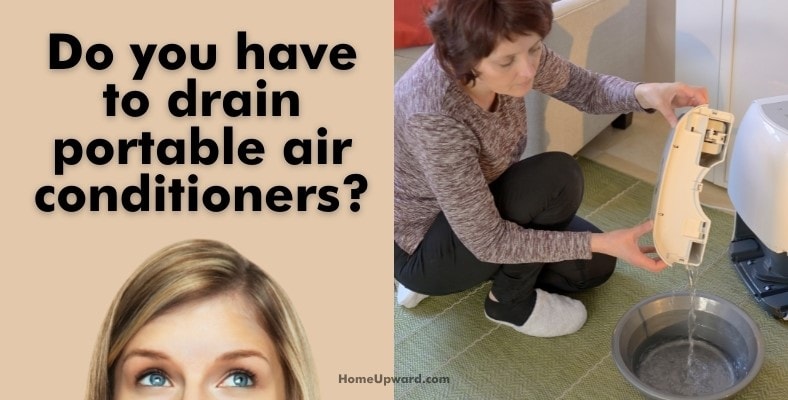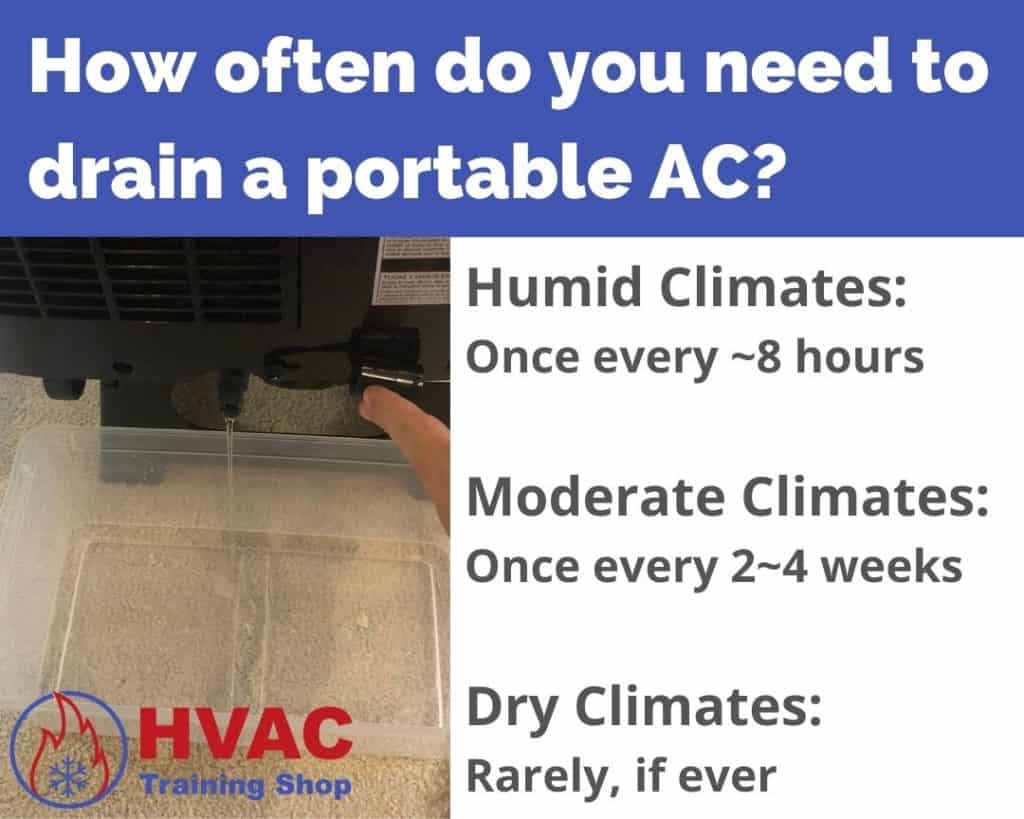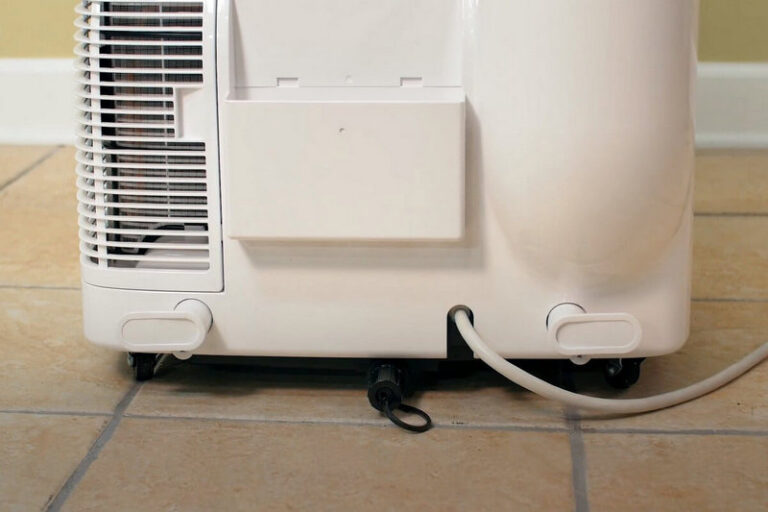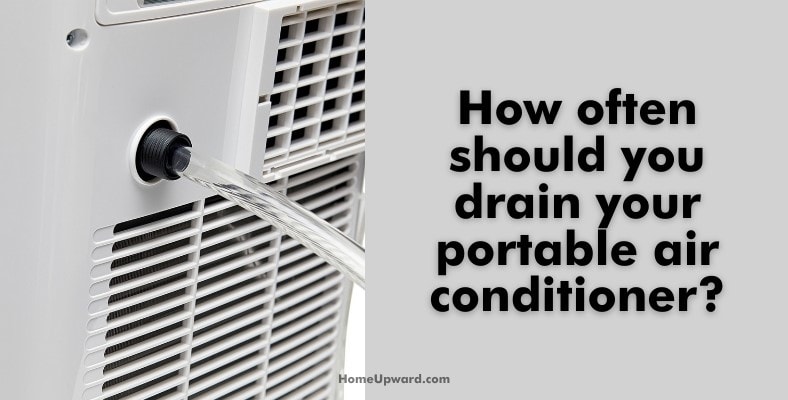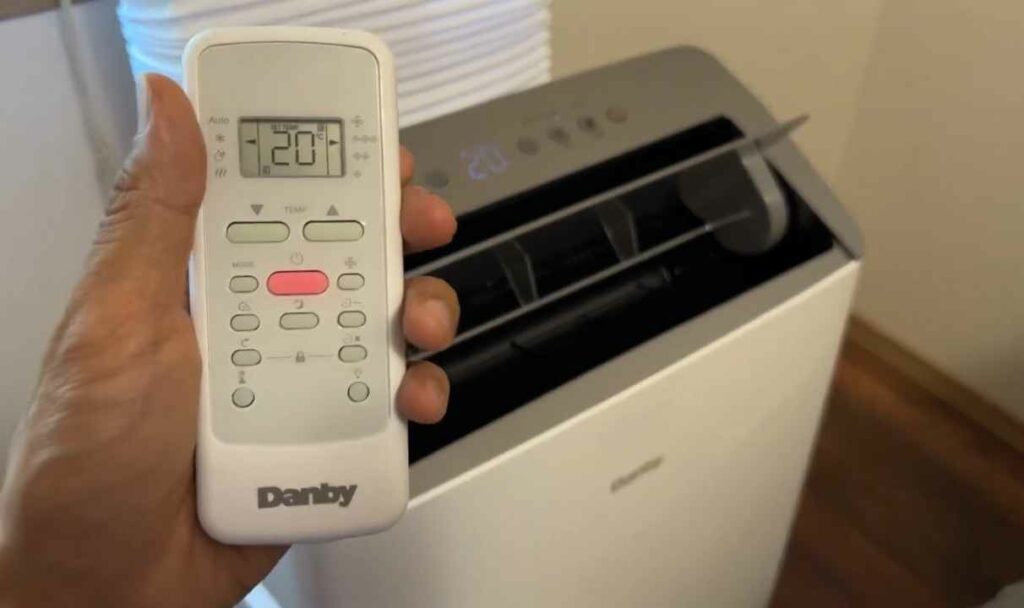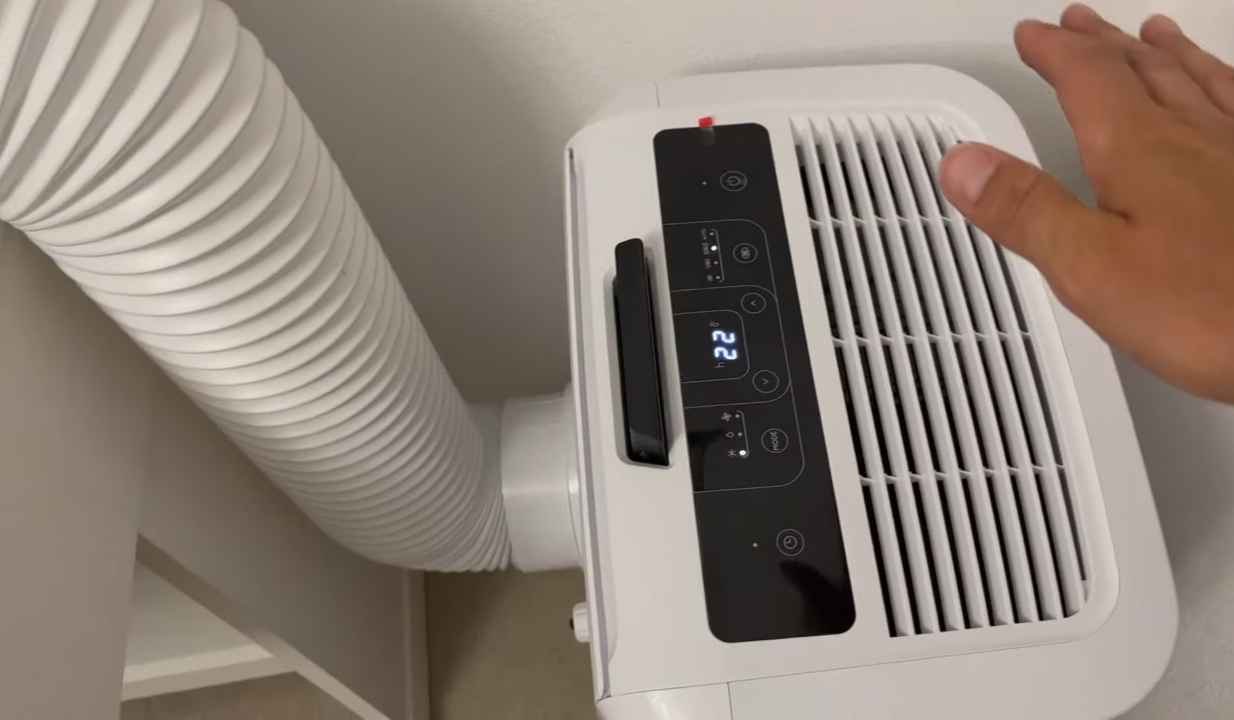Do You Need To Drain Portable Ac
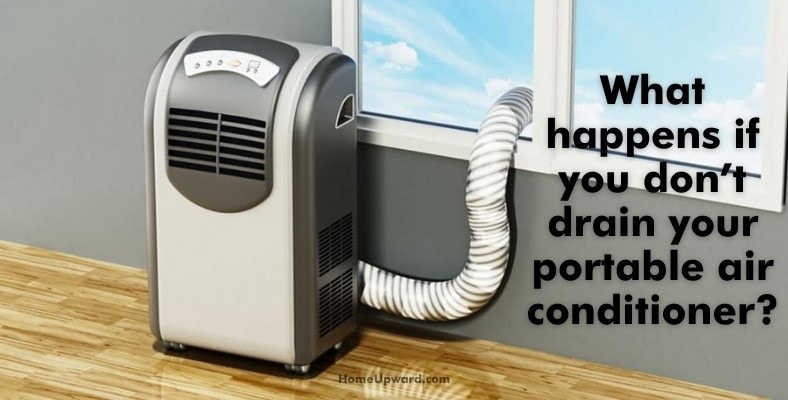
Portable AC users, listen up: failure to drain your unit properly could lead to malfunctions and even property damage. Immediate action may be needed to prevent issues.
This article provides critical information about whether you need to drain your portable AC, how to determine the draining requirements for your model, and the potential consequences of neglecting this crucial maintenance step.
Is Draining Absolutely Necessary?
The answer is: it depends. Not all portable AC units require manual draining, but understanding your specific model is key.
Self-Evaporating vs. Non-Self-Evaporating ACs
Portable ACs fall into two primary categories: self-evaporating and non-self-evaporating. Self-evaporating models are designed to vent most of the collected moisture through the exhaust hose.
Non-self-evaporating units, on the other hand, collect condensate in a tank that requires manual draining.
How to Determine Your AC's Draining Needs
The first step is to consult your owner's manual. This is the most reliable source for determining your specific model's draining requirements.
Look for sections discussing condensate, water tanks, or draining procedures. If you've misplaced your manual, search online using your AC's model number.
Another indicator is the presence of a drain plug or hose connection. If your unit has one, it likely needs draining at some point.
Consequences of Ignoring the Need to Drain
Ignoring the draining needs of a non-self-evaporating AC can lead to several problems. The most immediate consequence is a full water tank.
Once the tank is full, the AC will typically shut off automatically to prevent overflowing. A full tank can also cause leaks and water damage to your floors or surrounding areas.
Furthermore, stagnant water inside the unit can become a breeding ground for mold and bacteria. This can lead to unpleasant odors and potentially impact indoor air quality.
Draining Procedures: A Quick Guide
If your portable AC requires manual draining, the process is usually straightforward. Locate the drain plug or outlet, typically at the back or bottom of the unit.
Place a shallow pan or container beneath the drain to collect the water. Remove the plug or connect a hose to allow the water to flow out.
Some units have a continuous drain option, allowing you to connect a hose permanently and drain the water into a floor drain or sink.
Self-Evaporating Units: Not Drain-Free
Even self-evaporating units may occasionally require draining, especially in humid environments. While they vent most of the moisture, some condensation can still accumulate.
Monitor your unit for signs of water accumulation, such as reduced cooling performance or unusual noises. If you suspect excess water, check the drain plug and drain if necessary.
Data on AC Usage and Maintenance
According to a 2023 report by the U.S. Energy Information Administration (EIA), portable AC usage has increased by 15% in the past five years. This rise highlights the importance of understanding proper maintenance procedures.
A survey conducted by Consumer Reports found that 30% of portable AC users are unaware of their unit's draining requirements, leading to potential maintenance issues and reduced lifespan.
The Environmental Protection Agency (EPA) recommends regular maintenance, including draining, to ensure optimal performance and energy efficiency of portable AC units.
Urgent Action Required
Determine your portable AC's draining requirements today. Consult your owner's manual and inspect your unit for drain plugs or hose connections.
If your unit requires manual draining, establish a regular draining schedule based on usage and humidity levels. Failure to do so could lead to equipment malfunction and costly repairs.
Next Steps and Ongoing Developments
Manufacturers are increasingly incorporating features that reduce or eliminate the need for manual draining. Look for models with improved self-evaporation capabilities or built-in pumps.
Stay informed about the latest portable AC technologies and maintenance recommendations. Regularly check manufacturer websites and consult with HVAC professionals for expert advice.


